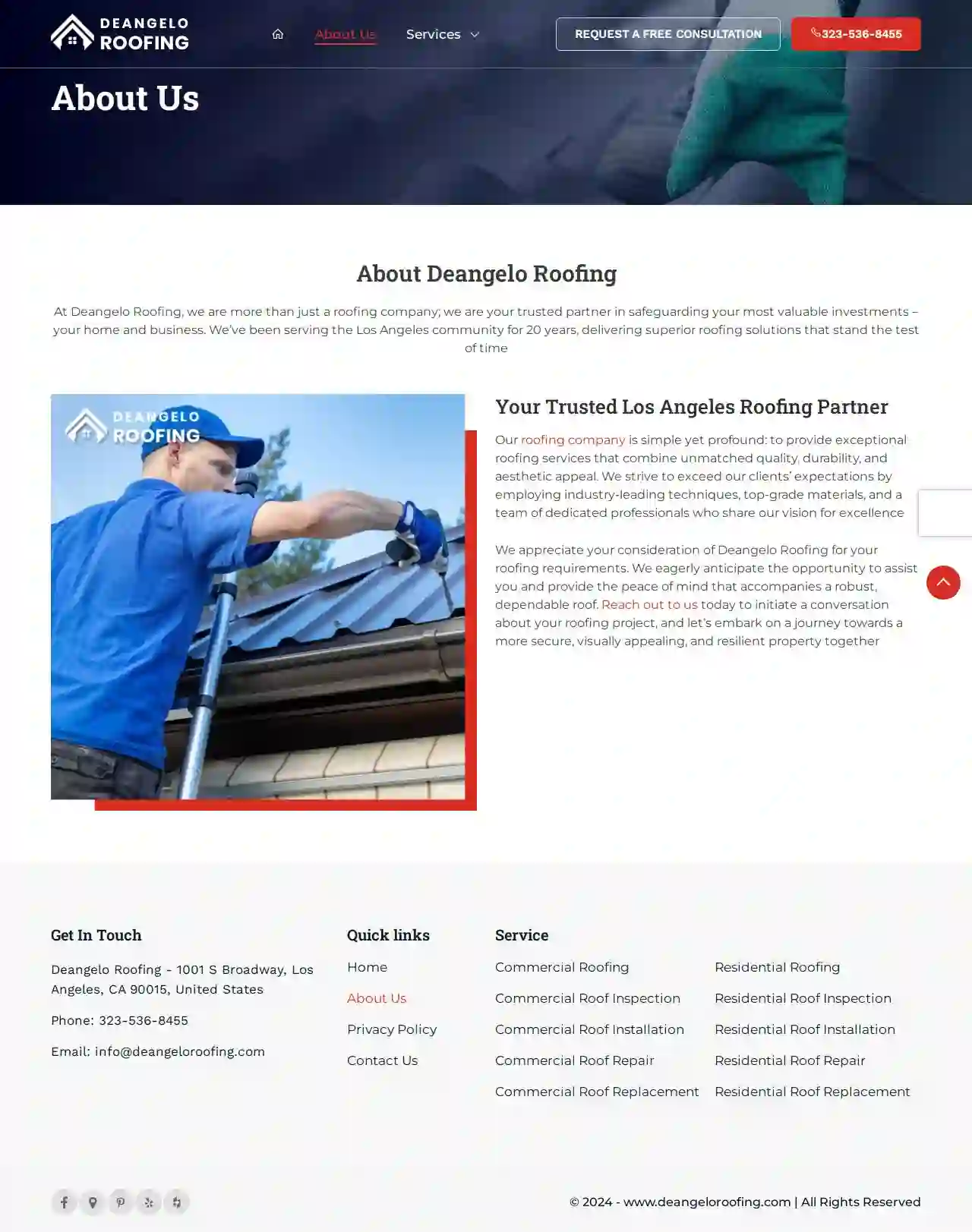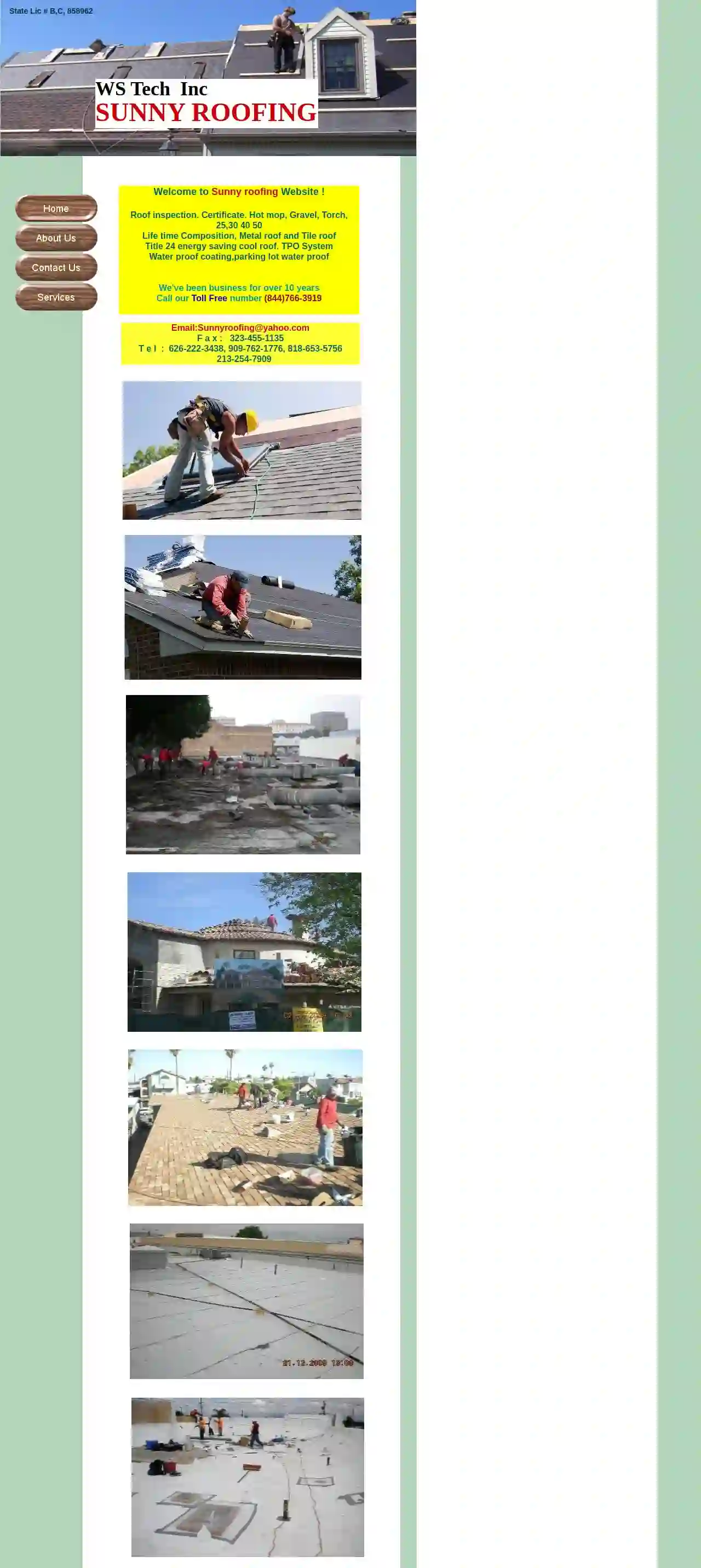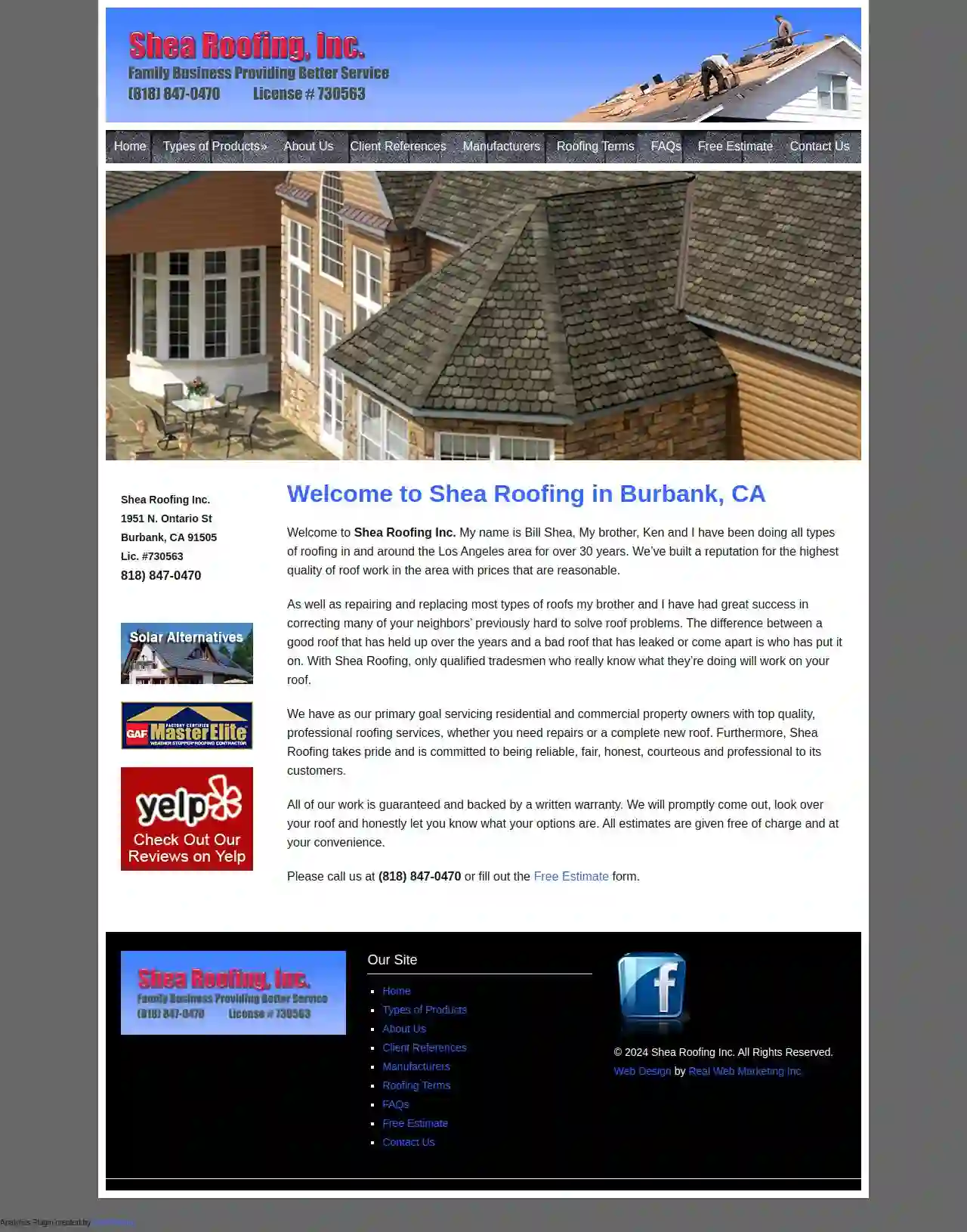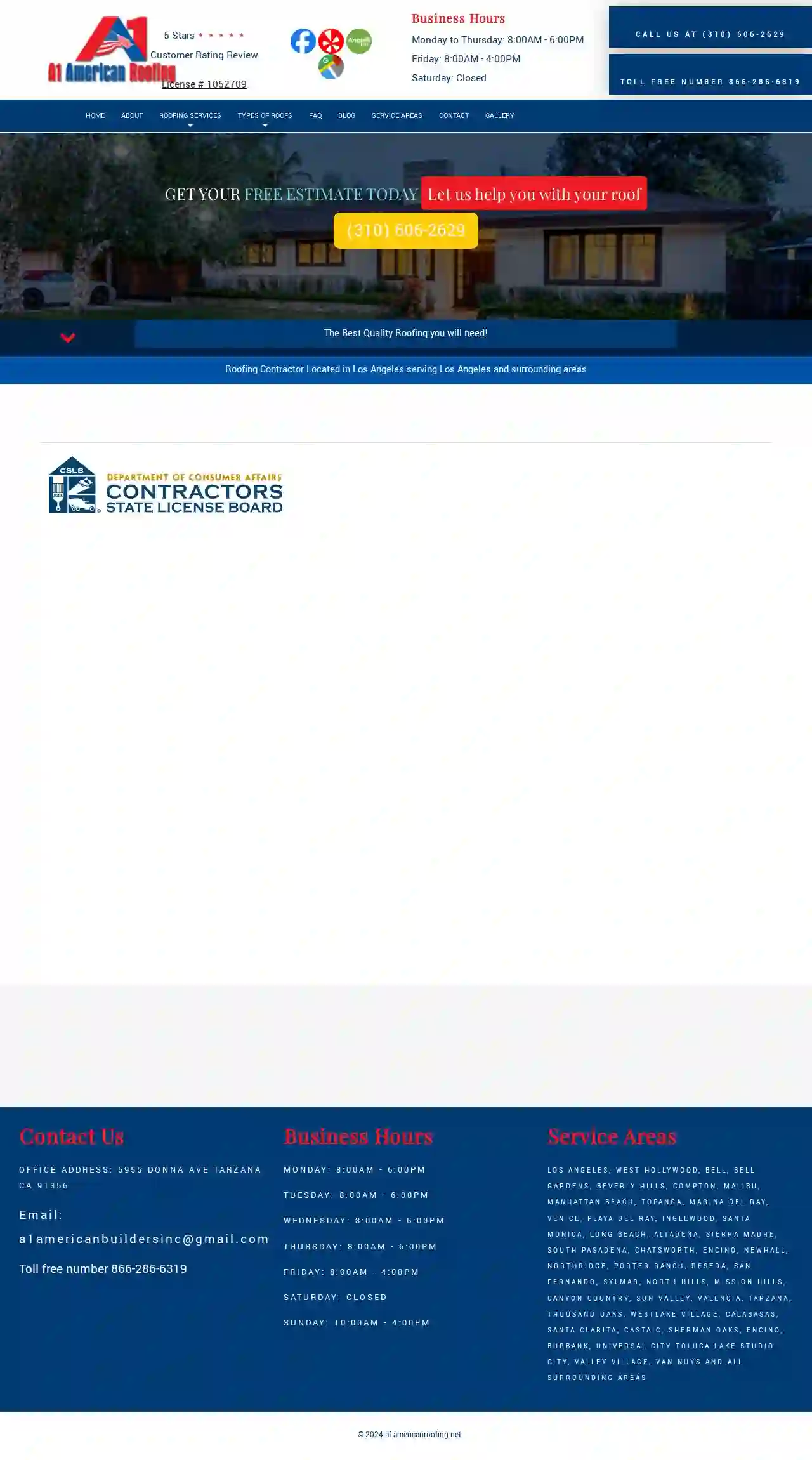Rubber Roof Installers Los Angeles
Find top EPDM Roof Installers in Los Angeles
Get up to 3 Rubber Roof Installers quotes for your project today! Compare profiles, reviews, accreditations, portfolio, etc... and choose the best deal.

DK Commercial Roofing Los Angeles
511 reviews600 N Ford Blvd, East Los Angeles, 90022, USDK Commercial Roofing is a full-service commercial roofing firm specializing in retail, manufacturing, and self-storage industries. We have provided expert roofing services to commercial property owners, businesses, and property manager associations for several years. When it comes to Los Angeles commercial roofing, we’ve got you covered. We are trusted for our fantastic customer service, high-quality materials, and adept craftsmanship. Our company has been recognized for reliability, affordability, and speed, and customers keep recommending our service. Contact us for commercial roofing Los Angeles locals can depend on!
- Services
- Why Us?
- Gallery
Get Quote
Lifetime Roofing & Renovation, Inc.
4.817 reviews1090028, Sunnyvale, 94087, USRoofing can be a complex and overwhelming industry, and it can be difficult to determine if your roof needs repair, replacement, or rebuilding. Finding the right roofing pro to handle the job with quality and expertise can add to the stress. At Lifetime Roofing & Renovation, we aim to simplify the process for you. All you have to do is reach out to us by filling out the contact request form or calling us at 408-685-2177. Our team will be in touch with you promptly to schedule a free, no-obligation quote.This quote will provide you with a clear understanding of the work needed, the cost involved, and the estimated project timeline. Whether you’re a homeowner, a business owner, or a roofing contractor, don’t hesitate to contact us. Our years of experience and expertise in handling all types of roofing issues make us the ideal choice for your roofing needs. Let us know what problem you’re facing and we’ll provide you with a comprehensive and effective solution to get your roof looking its best.
- Services
- Why Us?
- Gallery
Get Quote
Deangelo Roofing
52 reviews1001 S Broadway, Los Angeles, 90015, USAt Deangelo Roofing, we're more than just a roofing company; we're your trusted partner in safeguarding your most valuable investments – your home and business. For 20 years, we've been serving the Los Angeles community, delivering superior roofing solutions built to last. Our mission is simple yet profound: to provide exceptional roofing services that combine unmatched quality, durability, and aesthetic appeal. We strive to exceed our clients' expectations by employing industry-leading techniques, top-grade materials, and a team of dedicated professionals who share our vision for excellence. We appreciate your consideration of Deangelo Roofing for your roofing needs. We eagerly anticipate the opportunity to assist you and provide the peace of mind that comes with a robust, dependable roof. Reach out to us today to discuss your roofing project, and let's embark on a journey towards a more secure, visually appealing, and resilient property together.
- Services
- Why Us?
- Gallery
Get Quote
Newhaus Roofing Contractors
4.492 reviewsBurbank, Los Angeles, CA, 3316 W. Victory Blvd, 91505, USNewhaus Roofing & Construction has been providing quality roofing services since 1995. Our Roofing company is accredited by the Better Business Bureau and listed as a best roofing contractor in Los Angeles, CA. We have a team of experienced and highly skilled roofing professionals work with several roofing projects includes residential to commercial, Roof Replacement, Repair and Maintenance. We deliver all projects on time & work for our customer satisfaction so we stand out as a top roofing company in Los Angeles.
- Services
- Why Us?
- Accreditations
- Gallery
Get Quote
SLR Roofing
4.963 reviews18034 Ventura Blvd, Unit 451, 18034 Ventura Blvd Unit 451, Encino, 91316, USAt SLR Roofing, we're more than just roofers – we're dedicated professionals committed to excellence. With many years of experience in the Los Angeles area, we're known for top-notch craftsmanship and stellar service. From residential to commercial projects, we use premium materials and cutting-edge techniques for lasting results. Our skilled team ensures precision and attention to detail on every job, meeting the highest standards. But we don't stop at quality work. Customer satisfaction is our priority. We make the process hassle-free, from consultation to completion, with clear communication every step of the way. Choose SLR Roofing for trusted protection and join our family of satisfied customers today!
- Services
- Why Us?
- Gallery
Get Quote
Local Roofer
53 reviewsLos Angeles, CA, 1710 4th Ave, 90019, USWelcome to Local Roofer, proudly serving the Los Angeles area since 1996. We care about delivering the best in service, from the initial call to the finished project, we ensure you are completely satisfied. Our company is detail-oriented, and our team is knowledgeable about what they do, providing the latest in equipment. We use a high-tech system that uses satellites to measure your roof without us having to go to your location, allowing us to provide you with a fast and accurate roof installation estimate. We offer complete residential and commercial roofing solutions, including roof repair, skylight installation, roof replacement, roof coating, maintenance, and roof leak repairs for all types of roofs.
- Services
- Why Us?
- Testimonials
- Gallery
Get Quote
Jobe Roofing
4.332 reviews3022 West 48th Street, Los Angeles, CA, 90043, USSince 1998, Jobe Roofing & Solar has been providing Los Angeles, Santa Monica, Hollywood, and surrounding areas with top-notch roofing and solar solutions. We're dedicated to delivering a worry-free experience from start to finish, ensuring your project is completed with quality craftsmanship and affordable prices. With over two decades of experience, we've tackled a wide range of projects, from residential to commercial and even solar installations. Our team of experts is fully licensed, insured, and bonded, giving you peace of mind knowing your project is in capable hands. Whether you need a new roof, repairs, maintenance, or want to explore the benefits of solar energy, Jobe Roofing is your trusted partner in Los Angeles County, Orange County, and beyond.
- Services
- Why Us?
- Accreditations
- Our Team
- Testimonials
- Gallery
Get Quote
Sunny Roofing
32 reviewsLos Angeles, USWelcome to Sunny roofing Website !Roof inspection. Certificate. Hot mop, Gravel, Torch,25,30 40 50Life time Composition, Metal roof and Tile roofTitle 24 energy saving cool roof. TPO SystemWater proof coating,parking lot water proofWe've been business for over 10 years
- Services
- Why Us?
- Gallery
Get Quote
Shea Roofing Inc
4.613 reviews7531 Wheatland Ave, Sun Valley, 91352, USWelcome to Shea Roofing Inc. My name is Bill Shea, My brother, Ken and I have been doing all types of roofing in and around the Los Angeles area for over 30 years. We’ve built a reputation for the highest quality of roof work in the area with prices that are reasonable. As well as repairing and replacing most types of roofs my brother and I have had great success in correcting many of your neighbors’ previously hard to solve roof problems. The difference between a good roof that has held up over the years and a bad roof that has leaked or come apart is who has put it on. With Shea Roofing, only qualified tradesmen who really know what they’re doing will work on your roof. We have as our primary goal servicing residential and commercial property owners with top quality, professional roofing services, whether you need repairs or a complete new roof. Furthermore, Shea Roofing takes pride and is committed to being reliable, fair, honest, courteous and professional to its customers. All of our work is guaranteed and backed by a written warranty. We will promptly come out, look over your roof and honestly let you know what your options are. All estimates are given free of charge and at your convenience.
- Services
- Why Us?
- Our Team
- Gallery
Get Quote
A1 American Roofing
529 reviewsTarzana, CA, 5955 Donna Ave, 91356, USA1 American Roofing is a licensed roofing contractor located in Los Angeles, serving Los Angeles and surrounding areas. We provide a complete line of certified roofing services, including roof inspection, estimates, maintenance, repair, restoration, and installation. Our team of experts takes pride in informing customers about the latest in roofing technology and providing practical information about the most advanced and durable roofing materials and products. We offer a wide range of services, including flat or sloped roofing systems, built-up roofing, tar and gravel roofing, shingle roofing, modified bitumen roofing, tile roofing, green roofing, cool roof, slate roofing, and EPDM roofing. Our services also include roof restoration and roof installation, as well as commercial flat roof repair, slate and tile roof installation and repair, and roof ventilation installation and replacement. With over 15 years of experience, we have earned a reputation for providing high-quality roofing services and excellent customer service.
- Services
- Why Us?
- Accreditations
- Gallery
Get Quote
Over 17,196+ Roofers on our platform
Our roofing pros operate in Los Angeles & beyond!
Roofyng.com has curated and vetted Top Roofers in Los Angeles. Find the most trustworthy contractor today.
Rubber Roof Installation FAQs
- Durability: Resistant to weathering, UV damage, ozone, and temperature fluctuations.
- Flexibility: Can conform to various roof shapes and contours, making it suitable for complex designs.
- Water Resistance: Provides a watertight seal, preventing leaks.
- Ease of Installation: Relatively easy to install, reducing labor costs. Available in large sheets, minimizing seams.
- Cost-Effectiveness: Offers a good balance of performance and affordability.
- Low Maintenance: Requires minimal maintenance, typically periodic cleaning and inspections.
- Repairable: Damage can often be repaired with patches or sealant.
- Environmentally Friendly: EPDM is a recyclable material.
- Heat Absorption: EPDM's dark color absorbs heat, increasing cooling costs.
- Reflective Coatings: To combat heat absorption, consider a white or light-colored reflective coating over the EPDM membrane.
- Proper Ventilation: Adequate attic ventilation is essential to prevent excessive heat buildup under the roof.
- The size and complexity of the roof
- The thickness of the EPDM membrane (45 mil, 60 mil, 90 mil)
- The installation method (fully adhered, mechanically attached, ballasted)
- Whether the existing roof needs to be removed
- The cost of insulation and other materials
- Labor costs in your region
What are the advantages of a rubber roof?
How do I find rubber roof installers in my area?
Are rubber roofs good in hot climates?
How much does a rubber roof cost in the USA?
What are the advantages of a rubber roof?
- Durability: Resistant to weathering, UV damage, ozone, and temperature fluctuations.
- Flexibility: Can conform to various roof shapes and contours, making it suitable for complex designs.
- Water Resistance: Provides a watertight seal, preventing leaks.
- Ease of Installation: Relatively easy to install, reducing labor costs. Available in large sheets, minimizing seams.
- Cost-Effectiveness: Offers a good balance of performance and affordability.
- Low Maintenance: Requires minimal maintenance, typically periodic cleaning and inspections.
- Repairable: Damage can often be repaired with patches or sealant.
- Environmentally Friendly: EPDM is a recyclable material.
How do I find rubber roof installers in my area?
Are rubber roofs good in hot climates?
- Heat Absorption: EPDM's dark color absorbs heat, increasing cooling costs.
- Reflective Coatings: To combat heat absorption, consider a white or light-colored reflective coating over the EPDM membrane.
- Proper Ventilation: Adequate attic ventilation is essential to prevent excessive heat buildup under the roof.
How much does a rubber roof cost in the USA?
- The size and complexity of the roof
- The thickness of the EPDM membrane (45 mil, 60 mil, 90 mil)
- The installation method (fully adhered, mechanically attached, ballasted)
- Whether the existing roof needs to be removed
- The cost of insulation and other materials
- Labor costs in your region